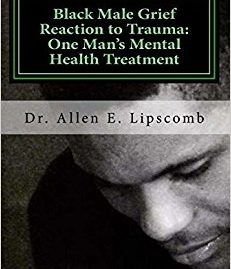By Stacy M. Brown (NNPA Newswire Contributor)
 Across the nation, educators say that federal dollars must follow former President Barack Obama’s Every Student Succeeds Act (ESSA), in order for the law to be effective.
Across the nation, educators say that federal dollars must follow former President Barack Obama’s Every Student Succeeds Act (ESSA), in order for the law to be effective.
“Sufficient federal Title I and Title II funding is critical in targeting resources to students and schools with the highest need, developing and supporting our educators working in these schools, and enabling states to meet their ESSA commitments,” said Liam Goldrick, the director of policy at New Teacher Center, a Santa Cruz, Calif., based non-profit that’s dedicated to improving student learning by accelerating the effectiveness of new teachers, experienced educators and school leaders. “Without these federal commitments and investments, students in under-resourced schools will continue to face an inequitable educational system and the work of educators will be made even more challenging.”
President Barack Obama signed the ESSA legislation on December 10, 2015. The bipartisan measure reauthorized the Elementary and Secondary Education Act (ESEA), the 1965 federal education law and longstanding commitment to equal opportunity for all students, according to the Obama Administration. ESSA was drafted to build on key areas of progress in recent years, made possible by the efforts of educators, communities, parents, and students across the country, officials with the Obama Administrations said.
When it comes to progress that was made during the Obama years, today, high school graduation rates are at all-time highs, dropout rates are at historic lows, and more students are going to college than ever before.
ESSA states that the new law will, “Advance equity by upholding critical protections for America’s disadvantaged and high-need students.”
Some education advocates have said that the new law doesn’t go far enough to address long-standing racial discrimination that plays out in our education system.

“Black Male Grief Reaction to Trauma:: A Clinical Case Study of One Man’s Mental Health Treatment” by Dr. Allen E. Pipscomb
“The law perpetuates an academic system of oppression in the lack of recognition to deconstruct [White supremacy],” said Allen E. Lipscomb, author of the 2016 book “Black Male Grief Reaction to Trauma: A Clinical Case Study of One Man’s Mental Health Treatment.”
Lipscomb also said that the law does not take into consideration the person-in-environment perspective and the mental health needs of some students.
“What does trauma look like? What are [the impacts of] additional stressors on intersectional identities,” for Blacks, poor people, or queer and transgender people, Lipscomb asked. “These identity markers also play a crucial role in the student’s ability to succeed, academically speaking, and this law must look at all of the nuances that impede a student’s ability to function and succeed within an oppressive educational system.”
Kim L. Defibaugh, the president of the National Art Education Association (NAEA) in Williamsburg, Va., said that the newest incarnation of federal legislation guiding K-12 education maintains the basic components of state plans and district report cards as accountability measures.
“A major change from the previous legislation is that it removes responsibility for outlining and monitoring implementation of the law from the U.S. Department of Education and returns it to the states,” Defibaugh said.
Defibaugh added that another encouraging key point in the language of the law, is the section that describes the “well-rounded education” provision, Section 8002.
“Mentioned throughout ESSA, it lists the arts as a subject essential to providing students a comprehensive and enriched educational experience,” Defibaugh said. “The National Art Education Association defines visual arts as a core academic subject and supports inclusion of a rigorous, high quality, comprehensive, sequential, and authentic visual arts program in every school for every child.”
Defibaugh said that individual states are still required to submit a plan to notify the U.S. Department of Education and local stakeholders about accountability systems, standards and assessments. The NAEA believes that a variety of authentic assessments, which are developmentally appropriate for all learners, are vital to best practices in art education, she said.
Defibaugh continued: “Under ESSA, states now have the flexibility to develop expectations for learning in the arts that meet the needs of the diverse population of students in their schools.”
Under sections describing the Assistance for Arts Education program (Section 4642) and a federal grant program (Section 4103), each state that receives an allotment for a fiscal year shall offer well-rounded educational experiences to all students, including female students, minority students, English learners, children with disabilities, and low-income students who are often underrepresented in critical and enriching subjects, which may include activities and programs in music and the arts.
“A broader focus on moving away from a simple reliance on test scores is wise and is a partial victory,” said Michael W. Apple, a professor of Curriculum and Instruction and Educational Policy Studies at the University of Wisconsin, Madison. “This is important to recognize since ‘No Child Left Behind’ and its process of blaming and shaming was disastrous in many ways, especially to many poor and minority communities.”
Apple cautioned against adding “rhetorical reforms” that, when put into practice, either give lip service to struggling schools or create more bureaucratic rules that take attention away from other extremely necessary and more robust reforms.
“For example, while I support a bill that puts more of a focus on a larger range of subjects and school experiences and evidence, will this prevent the current cycle of massive school closings in urban areas,” Apple said. “Will it deal realistically with the very real disproportionate funding that exists? Will the funding for the ESSA be sufficient? What will happen with a much more conservative Congress and [White House] that want to put much more money and support behind privatized education and who have continued to exhibit a lack of understanding of the realities of minority communities?”

